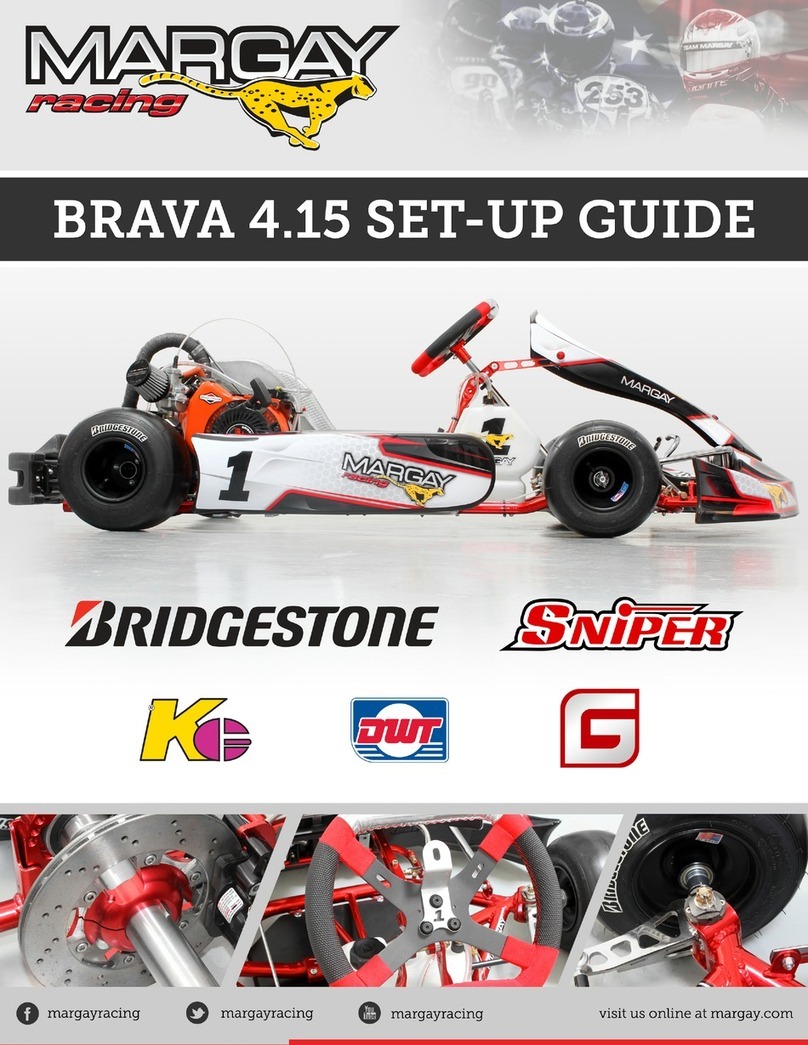
IGNITE K2 SET-UP
BASELINE SET-UP INFORMATION FOR THE IGNITE K2
Page 4of 28
SAFETY GUIDE
Always wear a helmet, neck support, driving suit and gloves while operating. Never
drive on public roads, highways or any place other than a sanctioned racing facility.
Karts can cause severe injuries, paralysis or death to the operator or others. Owner
assumes all responsibility for safe operation of the vehicle.
KART INSPECTION
It is the owner’s responsibility to carry out regular inspection of the kart components,
brakes, steering, etc. All steering components should be properly fastened and safety
clipped: steering shaft, tie rods, spindles and kingpins. All braking components should
be properly fastened and safety clipped: master cylinder, brake rod, brake caliper and
brake rotor. All nuts holding on wheels should be locking nuts. All nuts holding on
bodywork components should be locking nuts: front bumper, nerf bars and rear
bumper brackets.
KART MODIFICATIONS
Under no circumstances does Margay Racing authorize or recommend modifications
of any type to the chassis or components we manufacture and distribute. This
includes alternative methods of component assembly, chassis manufacturing, etc.
Altering the chassis or components is solely the responsibility of the owner.




























